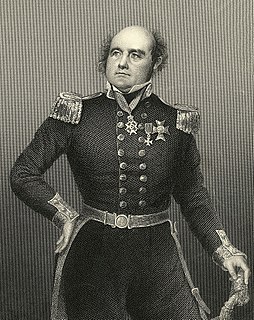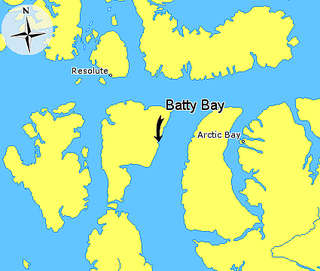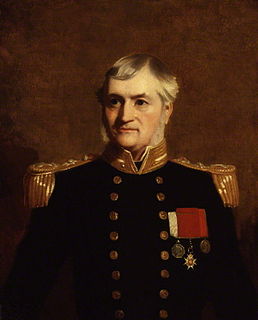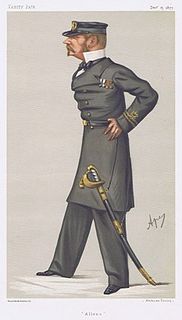 | |
| History | |
|---|---|
| Name: | Isabel |
| Builder: | Mr. Hilary McIsaac, at St Peter's Bay, Prince Edward Island |
| Launched: | 1850 |
| General characteristics HMS Isabel | |
| Class and type: | Auxiliary steamship |
| Tons burthen: | 149 net register. |
| Length: | 86.5 ft (26.4 m) (between perpendiculars) |
| Beam: | 22.9 ft (7.0 m) |
| Depth of hold: | 11.9 ft (3.63 m) |
| Propulsion: | Sails and steam (16 nominal horse power V-twin) |
| Sail plan: | 2-masted brigantine rigged |
| Complement: | 18 |
| Armament: | None fixed. |
The Isabel was a vessel intended to be used in four planned expeditions in search of the fate of the missing Franklin Expedition between 1852 and 1856, although she only managed to reach the Arctic once, in 1852. All of these expeditions were sponsored by Lady Franklin who also owned the vessel over most of this period, and expended much money for little result.
The Isabel was a nearly-new sailing vessel when purchased by Donald Beatson in 1851 for a proposed expedition to the Arctic via the Bering Straits. Lady Franklin became one of the major sponsors, but lack of funds forced Beatson to withdraw from the project in April 1852.
Lady Franklin herself became the ship's owner and, it being too late to reach the Bering Straits in time for the following summer, arranged for the vessel to make a brief sortie to the coast of Greenland under Edward Inglefield, RN, later that year.

Greenland is an autonomous constituent country of the Kingdom of Denmark between the Arctic and Atlantic oceans, east of the Canadian Arctic Archipelago. Though physiographically a part of the continent of North America, Greenland has been politically and culturally associated with Europe for more than a millennium. The majority of its residents are Inuit, whose ancestors began migrating from the Canadian mainland in the 13th century, gradually settling across the island.

Admiral Sir Edward Augustus Inglefield was a Royal Navy officer who led one of the searches for the missing Arctic explorer John Franklin during the 1850s. In doing so, his expedition charted previously unexplored areas along the northern Canadian coastline, including Baffin Bay, Smith Sound and Lancaster Sound.
Public subscriptions, including over £1671 from Van Diemens Land received early in 1853, allowed Lady Franklin to send the Isabel for the Bering Straits under William Kennedy, who had been commander of her previous expedition using the ketch Prince Albert in 1851-52. The sailing master was Robert Grate, who had been a crewman on the first Prince Albert expedition in 1850, and sailing master on the second. However, Grate and most of the crew mutinied at Valparaiso in August 1853, on the grounds that they believed the vessel was too small and unsuitable for the mission. After two years trading on the South American coast in the hope of finding another crew for the Bering Straits, Kennedy returned the ship to England in 1855.
William Kennedy was born at Cumberland House, Saskatchewan, a son of the Hudson's Bay Company Chief Factor, Alexander Kennedy and his English/Cree wife, Aggathas Margaret (Mary) Bear, daughter of Philip Turnor a cartographer for the HBC. He traveled extensively through the western region, with his family, residing at many Hudson's Bay Company Posts and Forts including Fort Spokane, and Fort Astoria while his father was the Chief Factor of the Columbia District. At thirteen, he was sent to his father's birthplace of St. Mary's Hope in the Orkney Islands for his education. He returned to Canada after his father's death. Wanting to return to England to become a surgeon like his older brothers, he could not get the sponsorship. Instead, he took employment as a fur-trader with the Hudson's Bay Company HBC).
After preparations were begun late in 1856 to send the Isabel back to the Arctic via Baffin Bay, Lady Franklin was finally convinced that the ship was unsuitable. After unsuccessful efforts were made to acquire HMS Resolute, the Isabel was sold and replaced by the auxiliary steamship Fox .

Baffin Bay, located between Baffin Island and the southwest coast of Greenland, is a marginal sea of the North Atlantic Ocean. It is connected to the Atlantic via Davis Strait and the Labrador Sea. The narrower Nares Strait connects Baffin Bay with the Arctic Ocean. The bay is not navigable most of the year because of the ice cover and high density of floating ice and icebergs in the open areas. However, a polynya of about 80,000 km2 (31,000 sq mi), known as the North Water, opens in summer on the north near Smith Sound. Most of the aquatic life of the bay is concentrated near that region.

HMS Resolute was a mid-19th-century barque-rigged ship of the British Royal Navy, specially outfitted for Arctic exploration. Resolute became trapped in the ice and was abandoned in 1854. Recovered by an American whaler, she was returned to Queen Victoria in 1856. Timbers from the ship were later used to construct a desk which was presented to the President of the United States and is currently located in the White House Oval Office.
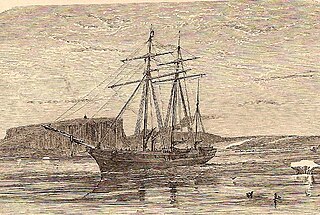
The steam yacht Fox was the vessel that Francis Leopold McClintock commanded in 1857-1859 on an expedition to the Arctic in northern Canada to search for the fate of the missing expedition of Sir John Franklin.
Isabel later became the tender to the Arctic whaler Emma of Hull. Her engine was later removed, and she was still in service as a sailing vessel, owned by G. Sinclair of Aberdeen, in the 1880s.
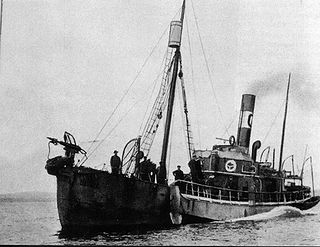
A whaler or whaling ship is a specialized ship, designed, or adapted, for whaling: the catching or processing of whales. The former includes the whale catcher – a steam or diesel-driven vessel with a harpoon gun mounted at its bow. The latter includes such vessels as the sail or steam-driven whaleship of the 16th to early 20th centuries and the floating factory or factory ship of the modern era. There have also been vessels which combined the two activities, such as the bottlenose whalers of the late 19th and early 20th century, and catcher/factory ships of the modern era.

Kingston upon Hull, usually abbreviated to Hull, is a port city and unitary authority in the East Riding of Yorkshire, England. It lies upon the River Hull at its confluence with the Humber Estuary, 25 miles (40 km) inland from the North Sea, with a population of 260,700 (mid-2017 est.). Hull lies east of Leeds, east southeast of York and northeast of Sheffield.

Aberdeen is a city in northeast Scotland. It is Scotland's third most populous city, one of Scotland's 32 local government council areas and the United Kingdom's 37th most populous built-up area, with an official population estimate of 196,670 for the city of Aberdeen and 228,800 for the local council area.

